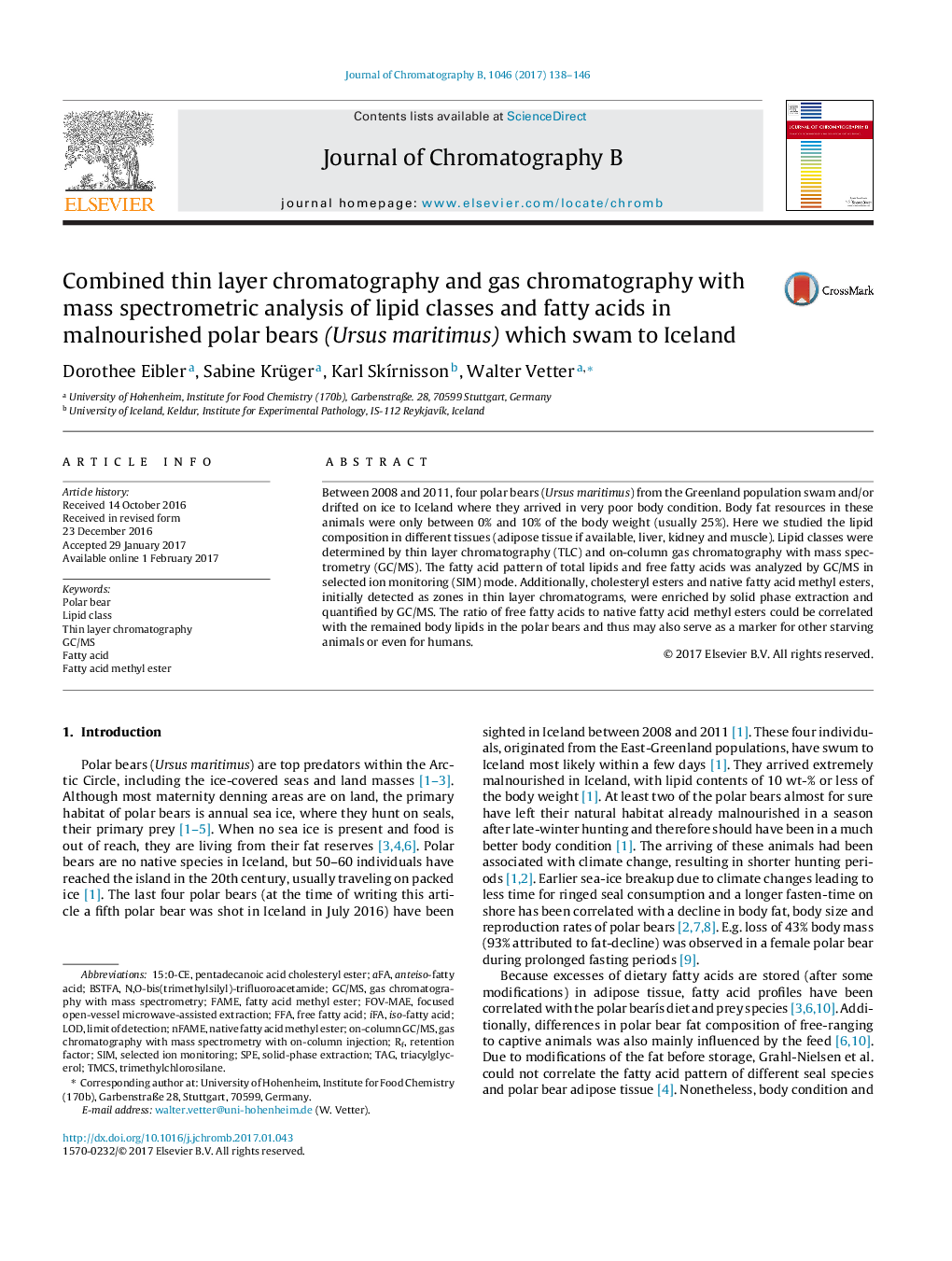| Article ID | Journal | Published Year | Pages | File Type |
|---|---|---|---|---|
| 5136460 | Journal of Chromatography B | 2017 | 9 Pages |
â¢Different lipid classes were determined in tissues of four malnourished polar bears.â¢Analyses were performed with thin layer chromatography and (on-column)-GC/MS.â¢A high proportion of fatty acid methyl esters was detected in livers.â¢Several findings were tentatively linked with changed metabolism due to starvation.â¢Some of the parameters may be used as markers for prolonged starvation.
Between 2008 and 2011, four polar bears (Ursus maritimus) from the Greenland population swam and/or drifted on ice to Iceland where they arrived in very poor body condition. Body fat resources in these animals were only between 0% and 10% of the body weight (usually 25%). Here we studied the lipid composition in different tissues (adipose tissue if available, liver, kidney and muscle). Lipid classes were determined by thin layer chromatography (TLC) and on-column gas chromatography with mass spectrometry (GC/MS). The fatty acid pattern of total lipids and free fatty acids was analyzed by GC/MS in selected ion monitoring (SIM) mode. Additionally, cholesteryl esters and native fatty acid methyl esters, initially detected as zones in thin layer chromatograms, were enriched by solid phase extraction and quantified by GC/MS. The ratio of free fatty acids to native fatty acid methyl esters could be correlated with the remained body lipids in the polar bears and thus may also serve as a marker for other starving animals or even for humans.
